Cistanthe tweedyi ( syns. Lewisia tweedyi, Calandrinia tweedyi, Lewisiopsis tweedyi ) sure has been renamed often through the years. I have my plants planted were they get light high shade in the heat of the day and twice a week irrigation. The substrate is a very well drained six inches deep layer of decomposed granite. The deeper layer is a clay/loam that is low in humus. They seem to do well for me but I have very low humidity and cool evening tempatures in the summer.
http://science.halleyhosting.com/nature/basin/5petal/purslane/lewisia/tw...
http://plants.usda.gov/java/profile?symbol=CITW2
http://www.efloras.org/florataxon.aspx?flora_id=1&taxon_id=242415723
http://biology.burke.washington.edu/herbarium/imagecollection.php?ID=3551
Comments
Re: Cistanthe tweedyi
I found this to be interesting information.
http://www.efloras.org/florataxon.aspx?flora_id=1&taxon_id=107148
Re: Cistanthe tweedyi
Beautiful plants but like David I shall not be dashing to my greenhouse to change the labels.
Re: Cistanthe tweedyi
John, beautiful forms of... yes...I'm going to say it...Lewisia tweedyi. Most often plants in clutivation are the apricot pink color, but I do love the yellow ones and near white one you show. When I use to hike around the Wenatchee Mts of Washington State, there were both apricot ones and some strong yellows.
Not sure I fully believe in the Cistanthe - Lewisia split including L. tweedyi... the FNA key (see excerpt below) has very little separating them plus an exception, for me its inclusion in Cistanthe seems incongruous.
4 (3) Petals 25-40 mm; seeds strophiolate; nc Washington to extreme sc British Columbia 2 Cistanthe (in part), p. 460
+ Petals 4-26 mm (15-35 mm in Lewisia rediviva); seeds estrophiolate; more widespread 4 Lewisia, p. 476
Here's a nice photo of what was a Calyptridium, now apparently a Cistanthe:
https://picasaweb.google.com/106490862382896714682/Sweetwaters2009#55123...
Re: Cistanthe tweedyi
The photo of the Cistanthe is C. monosperma. It is quite common on exposed ridges and slopes from about 4000' to 8000'.
The small Cistanthe species tend to raise their flower clusters off the ground during the day and set them back down in the early evening. This is caused by water pressure. In the evening and early morning the water pressure in the stems is equalized and they lie flat. In the sun the upper surface of the stem losses more moisture than the lower shaded surface. The stem's more turgid lower surface pushes against the limper upper surface. This imbalance of pressure results in an upward curving of the stem. The flowers are lifted and held aloft which I'm sure attracts more pollinators. On cloudy days they never lift off the ground.
Here are some close ups of the tiny flowers.
Re: Cistanthe tweedyi
Cistanthe monosperma is a delightful little plant! The only one I've seen and grown is Cistanthe umbellata (Spraguea umbellata, Calyptridium umbellatum, C. umbellatum var. caudiciferum), it is easily raised from seed and makes a good although short-lived trough subject. I have noticed the same thing about the stems raising up and down. When I was growing this, it went by Calyptridium umbellatum var. caudiciferum.
I like the common name Pussypaws applied to the "Capyptridiums" that have densely bracteate umbels of blooms, indeed looking "fluffy"; grow them with some Antennaria species (Pussytoes) to complete the whole cat foot theme ;)
Not sure how it is so, that a genus of a dozen or so former Calytridiums, has had a soupçon of this (1 Claytonia) and a dash of that (1 Calandrinia) added into the genus Cistanthe, garnished with a big bold Lewisia to top it off; the only way I can reconcile this taxonomic brew is to imagine that taxonomists sometimes have a sense of humor. e.g. the year 2003 publication of three former Hebe species (syn. Veronica/Paederota) as the new genus Hebejeebie. The validity of genus Hebejeebie can be checked out on IPNI.ORG, I'm not making this one up.
Re: Cistanthe tweedyi
The small Cistanthe species tend to raise their flower clusters off the ground during the day and set them back down in the early evening. This is caused by water pressure. In the evening and early morning the water pressure in the stems is equalized and they lie flat. In the sun the upper surface of the stem losses more moisture than the lower shaded surface. The stem's more turgid lower surface pushes against the limper upper surface. This imbalance of pressure results in an upward curving of the stem. The flowers are lifted and held aloft which I'm sure attracts more pollinators. On cloudy days they never lift off the ground.
That makes sense, never knew that before. I was blaming an imbalance of watering by the head gardener!

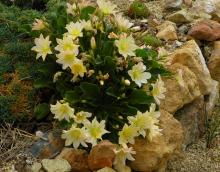
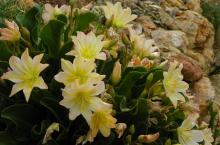
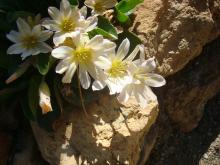
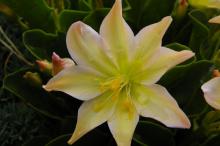
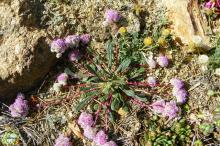
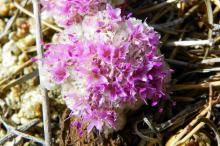
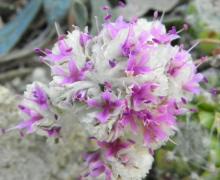
Very pretty John. I'm not rushing to change the labels on mine though! ;D